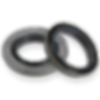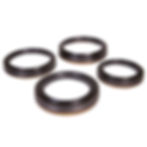Gearbox Seals
Our high-quality gearbox seals are specifically designed to withstand the demanding conditions of industrial machinery, providing a reliable and durable solution for preventing lubricant leakage. Made from top-grade materials, our seals are engineered to ensure a tight and secure fit, allowing them to effectively contain lubricants while withstanding the rigors of continuous use. With our gearbox seals, manufacturers can have peace of mind knowing that their equipment is protected from lubricant leaks, minimizing the risk of downtime and costly repairs. Whether for automotive, industrial, or renewable energy applications, our gearbox seals deliver exceptional performance and reliability, making them an essential component for maintaining the smooth and efficient operation of various machinery. Trust our gearbox seals to keep your equipment running smoothly and reliably for years to come.
More details
- Material Composition: Gearbox seals are typically crafted from durable materials such as rubber, silicone, polyurethane, or fluoropolymer compounds, selected for their ability to withstand the operating conditions within the gearbox environment.
- Lip Design: Many gearbox seals feature a lip design, which creates a barrier between the internal components and the external environment. This lip is often engineered to provide an effective seal against fluid leakage while maintaining low friction to prevent excess wear on the seal itself.
- Sealing Methods: Gearbox seals employ various sealing methods, including radial seals, axial seals, and lip seals. Radial seals are commonly used to prevent fluid leakage along the axis of rotation, while axial seals are suitable for sealing between stationary and rotating components. Lip seals utilize a flexible lip to create a dynamic seal, adjusting to the movement of the shaft.
- Pressure Resistance: Depending on the application, gearbox seals may need to withstand significant pressure exerted by the fluids within the gearbox. High-pressure seals are engineered with reinforced materials and robust construction to maintain their integrity under such conditions, preventing leaks and ensuring reliable performance.
- Temperature Tolerance: Gearbox seals must endure a wide range of temperatures, from extreme cold to high heat generated during operation. Specialized materials and designs are employed to ensure that seals remain effective across this temperature spectrum, maintaining their sealing properties without becoming brittle or deforming.
- Shaft Speed Compatibility: Gearbox seals are designed to accommodate varying shaft speeds encountered in different types of gearboxes. Whether the gearbox operates at low speeds in heavy-duty industrial machinery or high speeds in automotive transmissions, seals are engineered to provide consistent sealing performance without excessive friction or heat generation.
- Compatibility with Lubricants: The choice of gearbox seal must consider compatibility with the lubricants used within the gearbox. Certain materials may degrade or swell when exposed to specific types of lubricants, leading to seal failure. Therefore, seals are selected or designed to resist degradation and maintain their sealing effectiveness over time.
- Environmental Protection Standards: In some industries or applications, gearbox seals may need to meet specific environmental protection standards or regulations. This could involve compliance with standards for preventing fluid leakage, minimizing emissions, or ensuring the containment of hazardous substances within the gearbox enclosure.
- Customization Options: Manufacturers may offer customization options for gearbox seals to meet the unique requirements of specific applications. This could include variations in size, shape, material composition, and sealing profile to ensure optimal fit and performance within the gearbox assembly.














